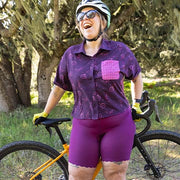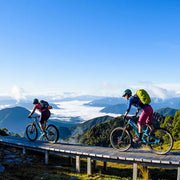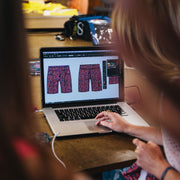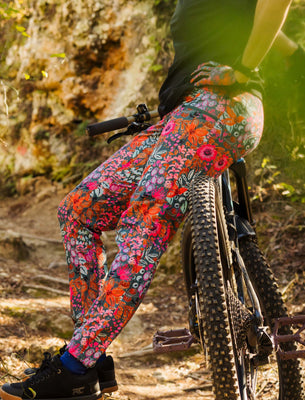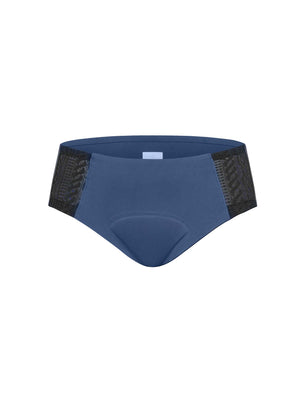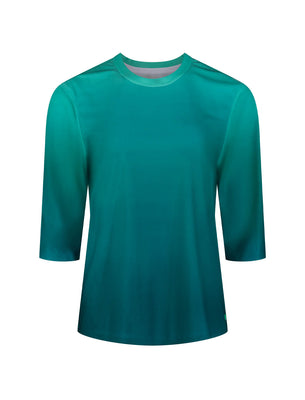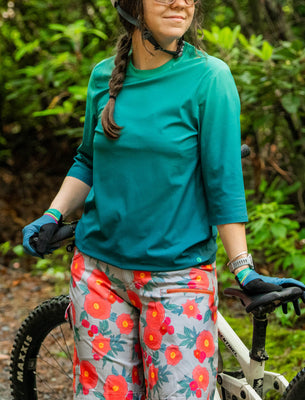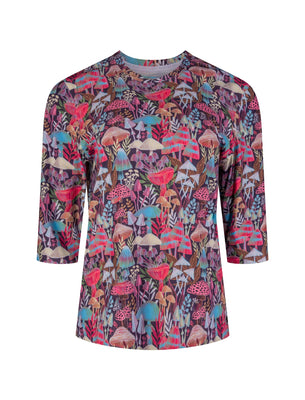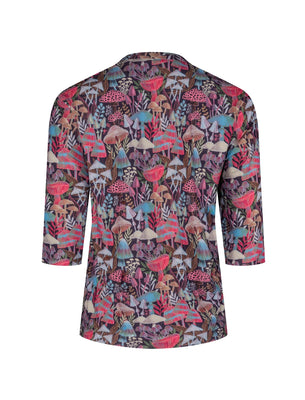If you’re new to mountain biking, we’d like to, first of all, welcome you to the sport. We hope you love it as much as we do. Maybe you’ve already found yourself a bike (wahoo!) and are feeling ready to hop on and ride off into the sunset. But, before you start cranking those pedals, there are a few other essentials to round up that will make your life on two wheels more enjoyable and safe. These are our top things that feel essential for almost every ride. As you get into the sport, you might find some additional things that feel essential.
Quick links to women's specific mountain biking clothing:
1. Bike Helmet
You can probably hear your mother saying these words: always wear a helmet. But she’s right, protect that noggin. A properly fitting bike helmet is your most important piece of mountain biking gear. We recommend a mountain bike-specific helmet if possible since it will provide more coverage for all the unpredictable and creative ways that we fall, and it will protect the back of your head better in case of an endo (shorthand for an end-over-end doozie). Helmets do degrade over time, and the more they’re used, the faster they break down from exposure to sun and sweat. So, when your well-meaning friend offers you the helmet her former roommate left behind in the garage four years ago, please kindly decline.
2. Flat Tire Repair Kit
Flats happen. Although rare these days with so many tubeless tires on the trail, a flat tire can still happen, especially for beginning mountain bikers. Before venturing far from the trailhead you should ideally know how to fix a flat on your particular bike and have practiced it at home. The minimum repair kit we always carry includes a tube (make sure it’s the right size for the bike you’re riding), tire irons, and some way to inflate that tube, either a pump or cartridge. Also, if/when you get your first real-deal flat tire and someone rides by and asks if you need help, it’s totally ok to say YES! The first time fixing a flat in the wild is a little intimidating, but we’ve all been there so stay calm, and confident and be glad you brought all the tools.
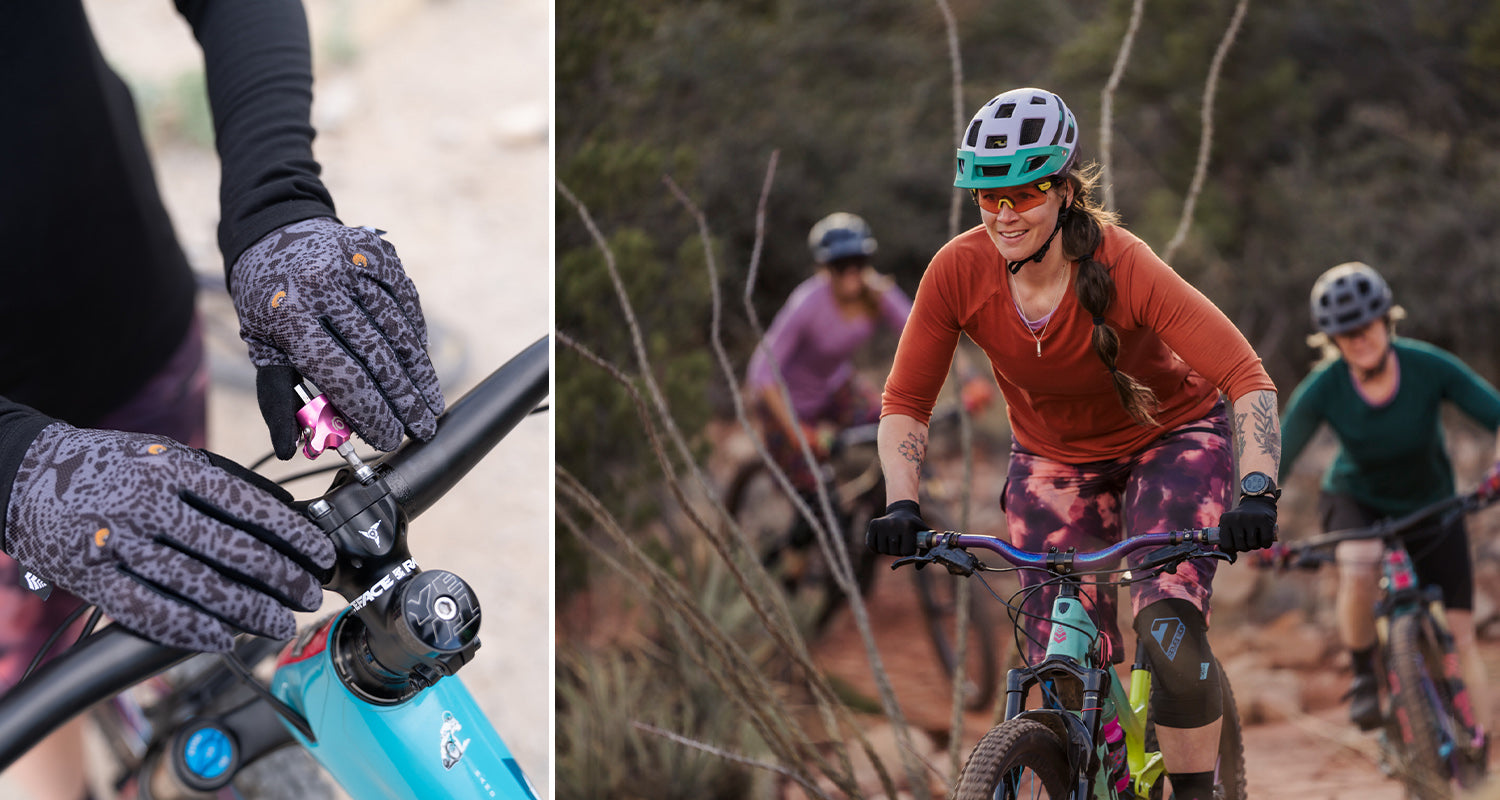
Mountain biking is not a clean activity, and thank goodness, because getting filthy dirty is part of the fun. However, It is nice to keep at least your eyeballs clean and protected from mud, bugs, sand, and wind; although you can wear your usual sunglasses on the bike, they might not be your most comfortable option. Mountain biking glasses are designed to shield your eyes, fit around or under your helmet straps, and have interchangeable lens options for low or bright light riding. Find a pair that stays put on your face, and has lenses that work well in your typical riding conditions.
4. Water
No matter how short or long the ride, hydration is essential. You can mount a bottle cage right on most mountain bike frames and have your water within reach – yep, that’s cool again. Or you can get a pack with a hydration system that allows you to carry water in a “bladder” inside the pack and drink it from an attached tube/nozzle. If you’re on a ride near a naturally occurring water source be sure to properly treat it before you chug that ice-cold creek water.
5. Gloves
Can you ride a mountain bike without gloves?
Yes.
Do we recommend it?
Not so much.
When you’re learning to mountain bike, you’ll likely. take some spills and having your hands protectedrom scuffed knuckles and prevent blisters on your palms. Gloves also help you keep a secure grip on your handlebars and brakes even if your palms are sweating it. Our mtb gloves are breathable, and stretchy and come in fun prints, which makes dusting yourself off after a tumble a little bit more enjoyable.
6. Multitool
“One time my pedal fell off my crank, mid-climb. Another time my saddle came completely loose, very nearly poking me in the tush. Then there was the time my friend broke chain miles from the trailhead on a late post-work ride.”
Starting to see the theme here? Technical difficulties happen and a decent multitool combined with some basic know-how can stop a minor issue from becoming the beginning of an epic fail. Find a tool you like with all the right gadgets, and bring it with you, on every ride. Even better, take time to learn about basic bike maintenance and field repairs. It’s fun and empowering to know your bike and makes you a safer rider.
7. Riding Pack, Strap, or Generous Pockets
How does one carry all these different pieces of mtb gear as you fly through the woods on two wheels while getting shaken like a can of paint? You’ve got some choices in the pack department and what you choose will come down to personal preference.
- A Hip Pack (aka fanny pack): It keeps your back free and can come big enough to carry all your essentials on short to mid-length rides.
- A Backpack: this can hold more gear, food, and water for longer or more remote rides.
- A Strap: With a strap, you can also find places to secure your essentials directly onto your bike. Note that this can be harder to do on smaller-sized frames so you might need to get creative if you have a smaller-sized mountain bike.
- A Frame or Handlebar Bag: Like a purse for your tools but can hang from various parts of the bike in case you have a space issue.
- Pockets: All of our mountain bike shorts have generous and secure pockets so you can keep some things easily accessible.
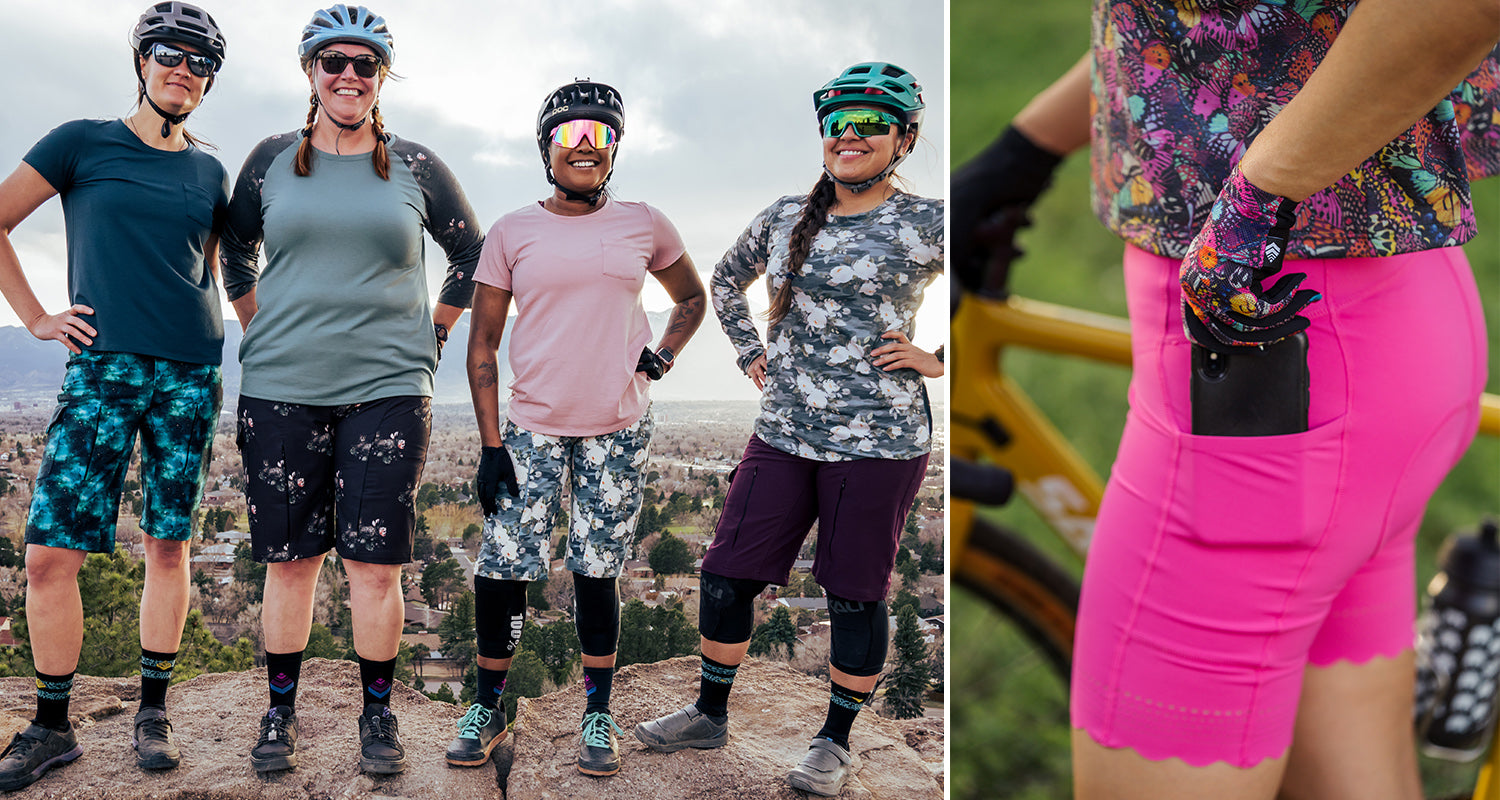
8. Cycling Shoes
There are many options for bike riding shoes and what you choose is largely dependent on what type of pedals you prefer (clips or flats) and the type of riding you like. When you’re first getting started, any sturdy shoe can work ok, but a mountain bike-specific shoe will improve your power transfer, stay put on your pedals better, and hold up to the abrasion of riding. Try on several pairs to find what fits your needs best and look for a secure but comfortable fit.
9. Comfortable Mountain Biking Clothes
There’s enough to think about when learning to mountain bike so you don’t want your clothing to be one of them when on the trail - avoid this by choosing some adventure-inspired apparel that will hold up to your needs.
On the bottom, you’ll most likely want a chamois, which is a tight-fitting padded short, as your base layer. It reduces friction and adds a little cushion between your undercarriage and the saddle. Over the chamois, we wear abrasion-resistant, looser shorts, sometimes called “baggies”. Our mountain bike shorts are made with a durable 4-way stretch fabric that moves with you on the bike and can hold up to the rigors of riding.
On top, you can wear whatever feels most comfortable for the weather you’re in. Our Raglan ¾ is a great choice that breathes well, has ¾ length sleeves for more coverage from the sun, and has room for elbow pads. We make our shorts in sizes 00-24 and our tops in XS-3X because we believe everybody should have mountain bike clothing that is functional, comfortable, and fun to wear.
10. Communication Device
As much as we enjoy unplugging and enjoying nature, packing a phone or backcountry communication device is always a good backup insurance policy. Technology can’t get you out of all unfortunate situations but if you’ll be riding within cell range it’s a good idea to bring a phone in case of emergency. There is also great mountain bike-specific apps for finding (and staying on) trails. If you’ll be out of cell range a lot, it might be worth looking into satellite communication options. Nothing can replace good planning, a knowledgeable group, and letting someone at home know where you’re going and when you plan to be back, but a little technology at the right time can be lifesaving.
